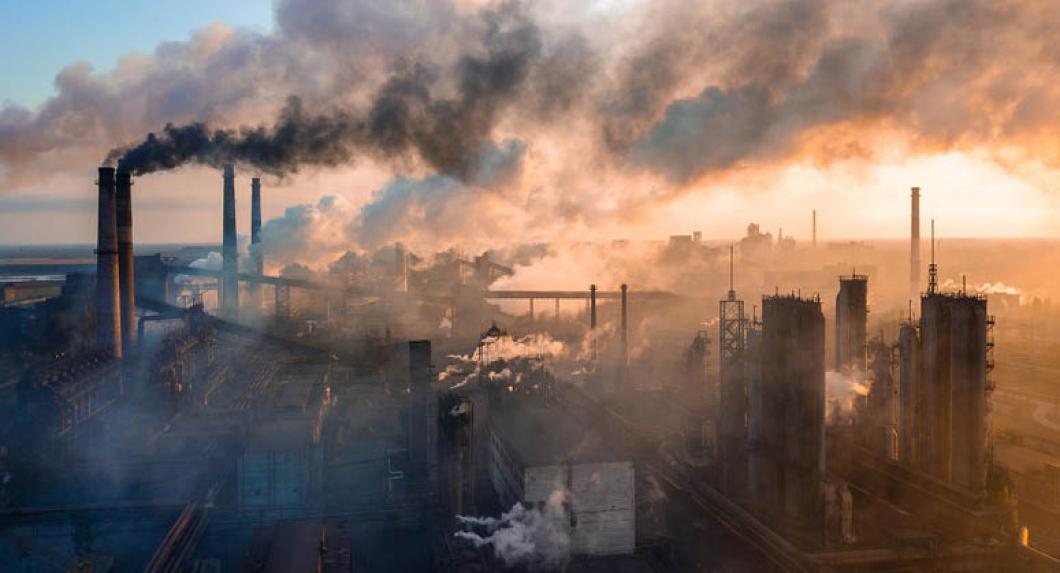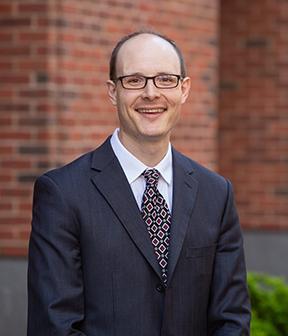Bankruptcy inflicts pain on a corporation, including wiping out shareholders’ equity and damaging the business’s reputation. But there are also positive aspects to bankruptcy, which can provide a financially troubled company with a fresh start. In his two recent papers, Professor Michael Ohlrogge has delved into another, largely overlooked upside of bankruptcy: reductions in environmental harms.
Ohlrogge began work on the paper that eventually became “Down the Tubes: Financial Distress, Bankruptcy, and Industrial Water Pollution” before joining the NYU Law faculty in 2019. He temporarily put it aside, however, and wrote its sequel-of-sorts, “Bankruptcy Claim Dischargeability and Public Externalities: Evidence from a Natural Experiment.” “Down the Tubes” presents Ohlrogge’s finding that proximity to bankruptcy alters a firm’s pollution levels, while “Bankruptcy Claim Dischargeability and Public Externalities" analyzes the effects of a federal court decision on how companies and their creditors deal with pollution issues.
“Down the Tubes,” which the American Law and Economics Association named last year as a best paper in the area of creditors, borrowers, and bankruptcy, looks at how approaching, entering, and exiting Chapter 7 and Chapter 11 bankruptcy affect the amount of pollution a company releases into public waterways. Using a data set gleaned from about 350 firms that entered bankruptcy and were subject to the Clean Water Act, Ohlrogge determined that the companies nearing bankruptcy polluted excessively at a 50 percent higher rate; serious violations rose even more markedly, by 80 percent. Upon filing bankruptcy, however, firms reduced their pollution to the levels achieved well before bankruptcy, and companies typically maintained those decreased levels even after exiting bankruptcy.
“Financial distress is widely recognized as creating distortions in firms that can lead them to operate less efficiently,” writes Ohlrogge, “thus destroying value of the firm and its assets…. Firms in financial distress are not, however, merely at risk of squandering the private value of their assets; they also may be at heightened risk of externalizing harms to third parties or to the general public.”
Ohlrogge offers reasons why the bankruptcy process affects a firm’s pollution levels. Partially or completely liquidated companies, he suggests, often leave behind facilities that are purchased by new owners willing to invest in pollution-reducing improvements.
Ohlrogge also explains how certain provisions of bankruptcy law can help mitigate environmental harms. “A pre-bankruptcy firm will be controlled by equity holders who may have little left to lose,” he writes. “After bankruptcy, control shifts towards creditors who generally will be the residual claimants and who will still have much value they could lose.” Creditors are typically loath to rack up environmental violations that impose various costs on the enterprise.
Among Ohlrogge’s key findings is that the most financially troubled firms at the time of their bankruptcy filings also have the worst pre-bankruptcy compliance with environmental regulations. He proposes “a new way to view the bankruptcy process, as an important tool to preserve public welfare.” Ohlrogge asserts that his findings bolster arguments for revised bankruptcy policies that “encourage firms to resolve financial distress sooner” and discourage “policies that encourage firms to delay bankruptcy as long as possible.”
Perceiving a gap in the literature on how the bankruptcy process can prevent public harms, Ohlrogge drafted an article that he believes is the first to use data from a large number of corporations to analyze the external harms that the companies create before and during bankruptcy. Such considerations are deeply interesting to Ohlrogge, who worked as a community organizer during the 2008 financial crisis and witnessed its impact on everyday people he was trying to help.
“What I want to do in my scholarship, as well as in my teaching,” says Ohlrogge, “is to show people that actually, if you care about what happens to the environment, if you care about what happens to vulnerable people, if you care about a lot of these other social issues, you should care about what happens in the world of finance and what happens in financial law and corporate law and bankruptcy law and banking law.”
Because Ohlrogge did not have the detailed data he felt he needed during his initial work on “Down the Tubes,” he set it aside to work on “Bankruptcy Claim Dischargeability and Public Externalities,” eventually circling back to the earlier project once he obtained a more robust data set. “In some respects it’s almost like the ‘Down the Tubes’ paper shows the problem, and then the claim dischargeability paper shows a solution,” says Ohlrogge.
In the latter paper, slated for publication later this year in the American Law and Economics Review, Ohlrogge takes his inspiration from US v. Apex Oil Co., a 2009 decision in which the US Court of Appeals for the Seventh Circuit held that even after bankruptcy reorganization, a firm remained responsible for remedying pre-bankruptcy contamination. The practical effect of Apex, Ohlrogge found, was to increase the priority of environmental cleanup obligations in bankruptcy in relation to creditors’ claims—a dramatic change in the bankruptcy landscape.
Analyzing the data, Ohlrogge made some striking discoveries. Post-Apex, companies with operations confined to the Seventh Circuit—making them likelier to file for bankruptcy there—reduced their onsite toxic chemical release between 12 and 30 percent by pursuing more environmentally sound disposal methods. Further, many lenders to those firms decided to draft stricter loan covenants related to toxic waste disposal. Thus, without an actual overhaul of the bankruptcy code or environmental regulations, the Seventh Circuit ruling helped reduce environmental harms substantially.
“The findings in this paper point to the potential value in looking at bankruptcy law and law more generally that influences recovery for firm creditors as tools to improve net social efficiency and distributional fairness,” Ohlrogge writes.
Ohlrogge, who intends to continue his research in this area with a focus on economic and racial justice impacts, says that the lessons of his scholarship also bring fresh relevance to classroom discussion. “When I’m teaching my students about bankruptcy,” he says, “I’m teaching them about these tools that help get more cash into a company that’s in financial distress. And it’s like, ‘Hey, one of the cool things about these is they can actually help the environment. It can help a company that otherwise did not have the cash to comply with environmental regulations. And so it just makes it more fun to learn about bankruptcy law and to work in this area.”
Posted February 27, 2024. Photo: Adobe Stock/Андрей Трубицын (smoke stacks)

